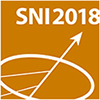Packaging technology is currently based on the use of petroleum-derived polymer materials. Environmental concerns, production costs and end-of-life disposal challenges require the introduction of innovative packaging materials produced using green technologies and able to meet requirements such as biodegradability and carbon neutrality. Cellulose nanofibrils (CNF) are highly stable...
The mobility of Fe in magnetite is a key ingredient towards a better understanding of its defect structure and resulting properties. For nanoparticles, which find a range of applications in medicine, spintronics, material science and catalysis, the near-surface is particularly important. Recent scanning tunnelling microscopy (STM) and low energy electron diffraction (LEED) studies of the...
We introduce a method for directly imaging depletion layers in operando with elemental specificity and chemical speciation at sub–100 nm spatial resolution applicable to today’s three-dimensional electronic architectures. These typically contain complex, multicomponent designs consisting of epitaxial heterostructures, buried domains, or nanostructures with different shapes and sizes. Although...
III-V semiconductor nanowires allow for a dislocation free integration of III-V semiconductors on Si substrates, which is highly interesting for optoelectronic applications. Ga-assisted GaAs nanowires exhibit a polytypism, which results in different segments of zincblende (ZB), its rotational twin (ZBT) and wurtzite (WZ) structure along the axial direction of nanowires.
To better understand...
This talk will illustrate how swift heavy ion-track nanotechnology provides an excellent platform (i) to fabricate tailored nanochannel sensors, (ii) to fabricate nanowires and investigate their size-dependent properties, and (iii) to develop 3-D and multicomponent nanostructure assemblies.
Membranes with parallel nanochannels are fabricated by swift heavy ion irradiation and subsequent...
The pair distribution function (PDF) technique exploits the total, i.e. the Bragg and diffuse, scattering of crystallographically challenging materials to derive their structure - with nanoparticles (NPs) being the biggest showcase in recent years. [1] The strong increase in flux at high X-ray energies combined with novel detector technologies at synchrotron radiation facilities allowed to...

